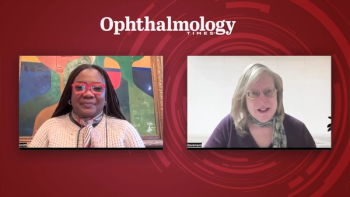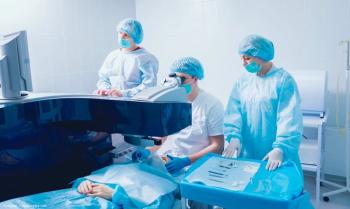
Intraocular lens shows good results over time
Long-term follow-up in a cohort of eyes with the dual-optic accommodating IOL implanted supports its use as a viable option for presbyopic correction after cataract surgery.
Boston-Long-term follow-up in a cohort of eyes with the dual-optic accommodating IOL (Synchrony, Abbott Medical Optics) implanted supports its use as a viable option for presbyopic correction after cataract surgery, said Ivan Ossma, MD, MPH, MSc, at the annual meeting of the American Society for Cataract and Refractive Surgery.
Dr. Ossma told attendees that he first implanted the IOL in July 2003, and has implanted the device in a total of 473 eyes. He reported results from a prospective follow-up of a personal series of 46 eyes of 37 patients aged 41 to 79 years at implantation (mean 67.3 years). The surgeries were performed in 2003 and 2004 using an earlier version of the dual-optic accommodating IOL and a forceps to introduce it through a 4.5-mm scleral incision.
Data collected during an average follow-up of 63 months showed the patients achieved stable refractive outcomes and maintained good functional vision at all distances. There were no important safety signals, and the Nd:YAG laser capsulotomy rate was very low.
"My experience is also favorable, and, to my knowledge, represents the longest reported follow-up of a Synchrony IOL cohort," he said. "Currently, however, even better outcomes are being achieved. The surgical technique has changed so that implantation is through a 3.8-mm incision using a preloaded injector, which allows for better astigmatism control, and the power calculation formula has evolved so that the refractive endpoint is tighter."
Analyses of monocular best distance-corrected acuity showed all patients achieved better than 20/40 with a mean just slightly above or below 20/20 at all follow-up intervals.
"One patient in the cohort developed exudative [age-related macular degeneration] between the 4th and 5th year after implantation of the Synchrony IOL and has been treated with multiple [injections of] bevacizumab [Avastin, Genentech], but distance-corrected acuity declined to 20/32 in this patient," Dr. Ossma said.
Monocular intermediate acuity measured through best distance correction averaged better than 20/25 from 6 months on, and monocular distance-corrected near visual acuity was 20/40 or better in all eyes, with a mean close to 20/25.
Posterior capsule opacification
Only 2 (4.3%) eyes in the cohort underwent Nd:YAG laser capsulotomy for posterior capsule opacification (PCO). The opacities developed at 34 and 41 months, respectively, and after the capsulotomy, good visual outcomes were achieved for distance, intermediate, and near.
"There is concern about the rate of PCO with any new type of IOL technology," Dr. Ossma said. "When I first started implanting the Synchrony IOL, I would never have expected to see such good maintenance of capsule clarity over time.
"However, one of the striking features of this lens is that it truly fills the capsular bag," he added. "This information will change our understanding of the development of PCO and the benefit of filling the bag to reduce its occurrence."
FYI
Ivan Ossma, MD, MPH, MSc
E-mail:
Dr. Ossma is a consultant to Abbott Medical Optics.
Newsletter
Don’t miss out—get Ophthalmology Times updates on the latest clinical advancements and expert interviews, straight to your inbox.





